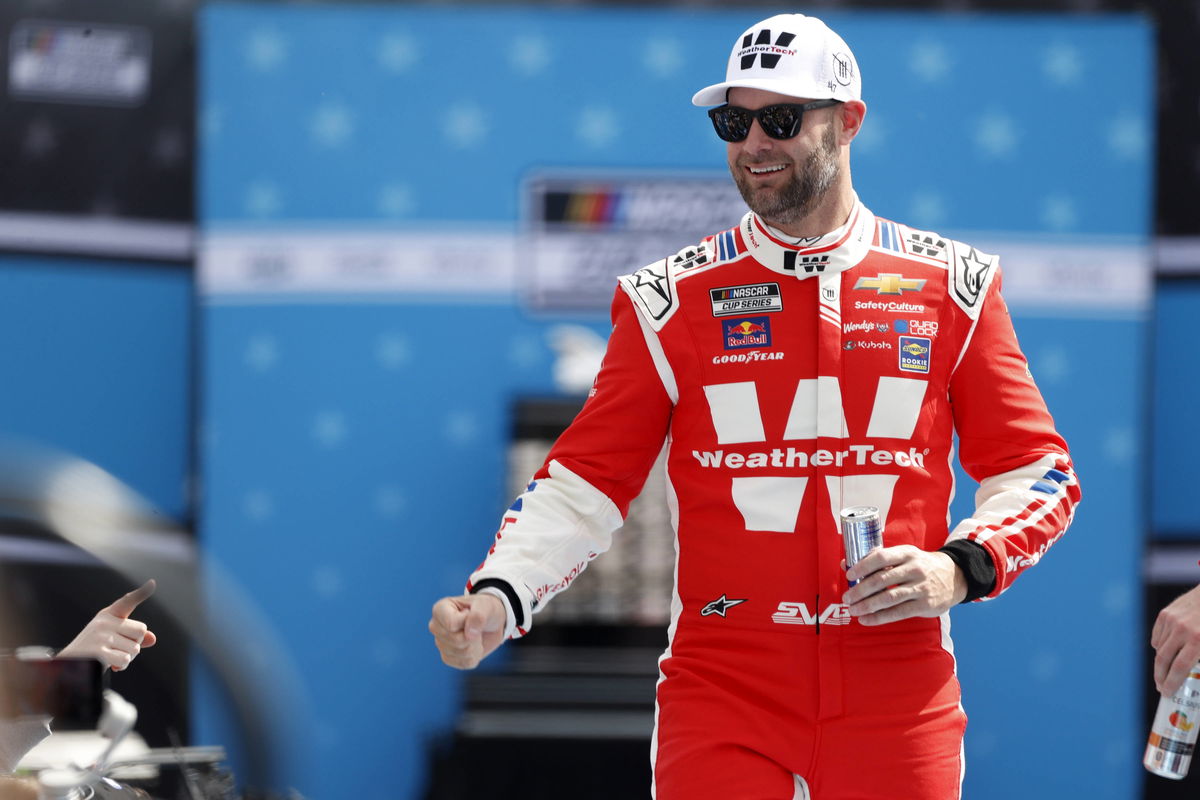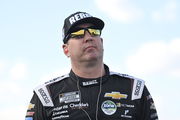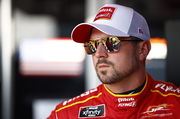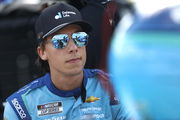
Imago
DAYTONA BEACH, FL – FEBRUARY 16: Shane Van Gisbergen 88 TrackHouse Racing WeatherTech Chevrolet shakes hands prior to the running of the NASCAR, Motorsport, USA Cup Series Daytona 500 on February 16, 2025 at Daytona International Speedway in Daytona Beach, FL. Photo by Jeff Robinson/Icon Sportswire AUTO: FEB 16 NASCAR Cup Series DAYTONA 500 EDITORIAL USE ONLY Icon25021616042500

Imago
DAYTONA BEACH, FL – FEBRUARY 16: Shane Van Gisbergen 88 TrackHouse Racing WeatherTech Chevrolet shakes hands prior to the running of the NASCAR, Motorsport, USA Cup Series Daytona 500 on February 16, 2025 at Daytona International Speedway in Daytona Beach, FL. Photo by Jeff Robinson/Icon Sportswire AUTO: FEB 16 NASCAR Cup Series DAYTONA 500 EDITORIAL USE ONLY Icon25021616042500
For many outside the U.S. — even international standouts like Shane van Gisbergen — NASCAR stock cars can seem like loud, burly, V8-powered relics that lean on driver tenacity over high-tech wizardry. Compared to Formula 1’s sleek hybrids, with their energy recovery systems and intricate aerodynamics, or even the tech-heavy Supercars series, NASCAR appears like a throwback, prioritizing raw power over gadgets like traction control or active suspension. So no wonder that international drivers and fans think it’s more instinct than engineering precision — but that’s only half the story.
Watch What’s Trending Now!
Gisbergen, the Kiwi tearing up NASCAR’s road courses, first came in with the same “low-tech” assumption. Fresh off back-to-back wins in Chicago and Mexico City in 2025, he’s seen the light. His Chicago Grant Park 165 victory, where he led 38 laps from pole, and his dominant Mexico City charge showcased his road course mastery. But it’s what he learned off the track that’s got him talking. SVG spilled the beans about NASCAR’s hidden tech edge, admitting it flipped his perspective on what stock cars are capable of.
ADVERTISEMENT
Van Gisbergen’s Technological Hot Take
On Kevin Harvick’s Happy Hour podcast, Van Gisbergen was asked whether he thought “[…] people underestimate the amount of technology that’s in NASCAR, compared to other racing divisions?” And Shane didn’t hold back. “I had no idea about the technology in NASCAR,” he stated, “because you make out that these cars are basic, they’re agricultural, and so is the tech that’s underneath them. I wish there was an exciting way to tell people about it, or show people all the simulators and stuff.”
His shock reflects a common misconception among international racers to see NASCAR’s tube-frame chassis and pushrod V8s as “primitive” next to Formula 1 or Supercars. But NASCAR’s tech runs deep. Teams like Hendrick and Joe Gibbs pour millions into Driver-in-the-Loop (DIL) simulators from vendors like Ansys and AVL, tools also used in F1 and endurance racing. SVG’s own 2023 Chicago debut win, the first Cup victory in a driver’s first start since 1963, leaned heavily on Trackhouse Racing’s simulator in Concord, North Carolina. He logged hours virtually mapping the street course, proving how vital these tools are to modern NASCAR success.
SVG continues: “You know, the tech side is kind of boring really to the average fan, but it’s mind blowing the detail and little intricate parts on the car to make speed and quality control and all the aero stuff. Seeing the things in the body scanner, how they’re manipulating everything like it’s years ahead of what I had back at home.”
ADVERTISEMENT
Which brings us to NASCAR’s unsung tech hero: the Optical Scanning Station (OSS), introduced in 2018. OSS uses lasers to scan cars with precision down to thousandths of an inch, ensuring compliance but also pushing teams to master body shaping. A 2022 incident saw Brad Keselowski’s RFK Racing hit with a 100-point penalty for a post-race OSS-detected body panel tweak, while Denny Hamlin and Kyle Busch lost a Pocono finish that year over a vinyl wrap altering aero, proof that even tiny details matter.
Teams also lean on computational fluid dynamics (CFD) and wind tunnels, like Chevrolet’s dedicated NASCAR facility or Ford’s WindShear rolling-road tunnel, rivaling F1’s aero tech. SVG’s Supercars background, where he won three titles, lacked this level of scanning precision, making NASCAR’s setup a revelation.
ADVERTISEMENT
Top Stories
Kyle Busch Hits Rock Bottom as Snowball Derby Nightmare Sparks Wave of Fan Sympathy

Dale Jr.’s Media Empire Targeted as YouTuber’s Unjust Attack Sparks Fan Outrage

‘RIP’: NASCAR World Crumbles in Tears as 39-YO Former JR Motorsports Driver Passes Away

Carson Hocevar Takes a Sly Dig at NASCAR’s Data-Driven Gimmicks in Honest Dirt Track Rant

Kevin Harvick Son Keelan Silences Critics With Masterclass Comeback to Hunt Down Rivals in Biggest Career Win

SVG’s hot streak and playful take on flipping the bird
Shane van Gisbergen has been unstoppable lately, turning NASCAR’s road courses into his playground. With the 2025 season packing six road courses: Chicago, Mexico City, Sonoma, Watkins Glen, Circuit of the Americas, and the Charlotte Roval, he’s been on fire, racking up wins in Chicago and Mexico City. His Chicago victory saw him dominate from pole, leading 38 laps, while Mexico City showcased a late-race surge and fuel strategy masterclass.
But off the track, SVG’s got opinions, including a cheeky take on a NASCAR tradition: flipping the bird. In Jeff Gluck’s 12 Questions Series, he was asked about his middle-finger policy. “There are a couple of drivers; we do it for fun at each other, but yeah, I did it [in Michigan] at someone. They were racing me like an idiot, and then they put their hand out at me. So I passed them and then did it back. I think it’s pretty rude, though. I don’t want to do that all the time. You only do it when people deserve it, I guess. Or for fun.” SVG said.
ADVERTISEMENT
He added, “When they’re really angry, the whole hand comes out,” laughing about the gesture’s rarity in Supercars due to windowed cars. His playful side shines through with his growing friendship with Bubba Wallace, sparked by their mutual pal, Scott McLaughlin.
“Bubba is one of the guys I’m getting closer to,” Gisbergen told Gluck,”I always get along with him, and I’m happy to see him do well. We’ve been starting to race each other a bit more, which is good for me, I guess. Just the friend circle with Scotty. He hangs out with Scotty a lot, and that’s how you get to know him a bit. Had him around home a couple of times.” This bond, built off-track with Wallace, McLaughlin, and others like Ryan Blaney, could translate to better on-track chemistry, especially as SVG keeps dominating road courses and trading playful gestures with his new NASCAR crew.
ADVERTISEMENT
ADVERTISEMENT
ADVERTISEMENT
ADVERTISEMENT

